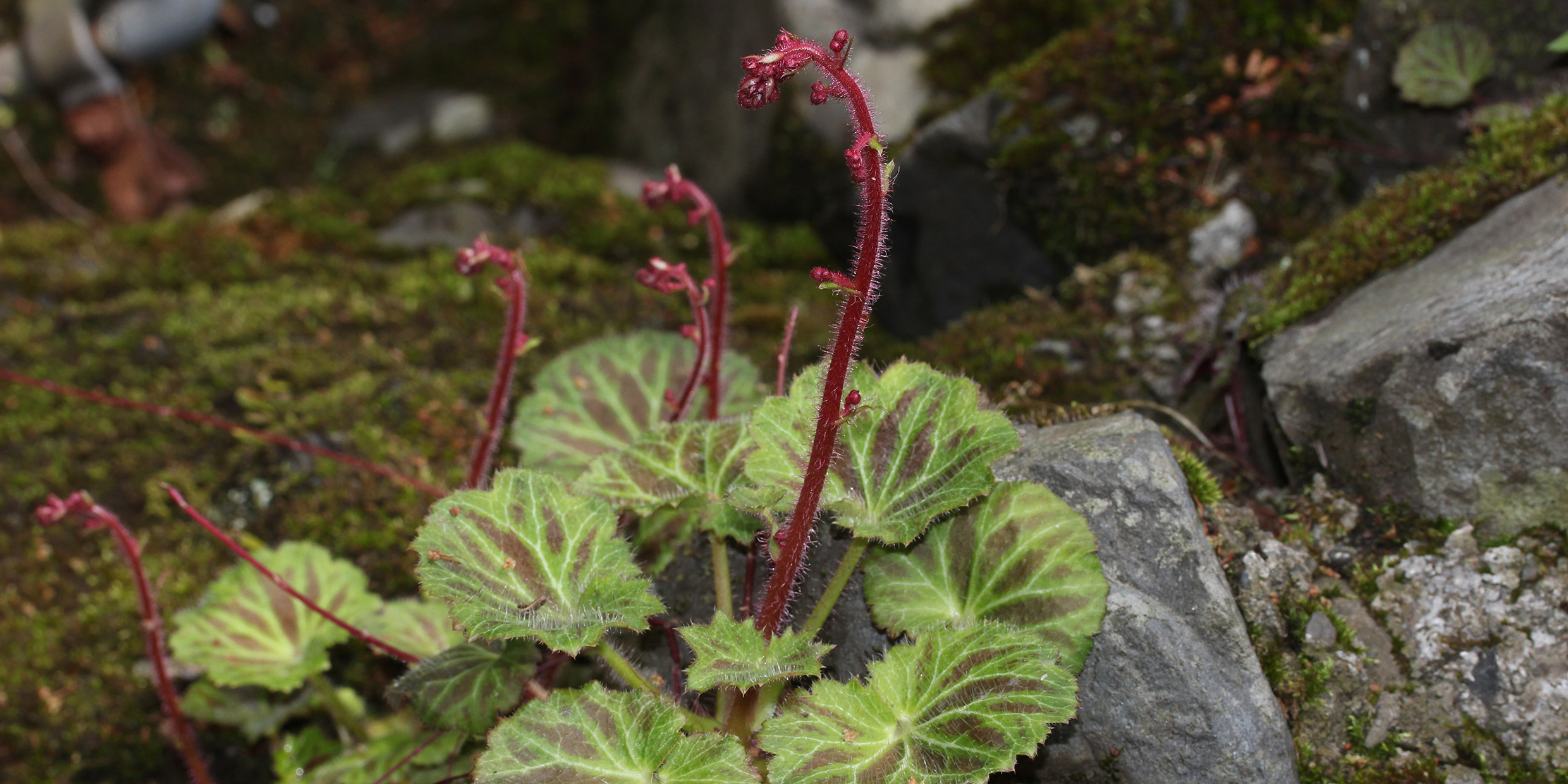Originally published 4 July 1988
In his Field Guide to the Birds, Roger Tory Peterson gives this characterization of the purple finch: “Male: About the size of a House Sparrow, rosy-red, brightest on head and rump.” Then he adds a traditional description — “a sparrow dipped in raspberry juice.”
That’s it. Decisive. The perfect fit. Anyone who has ever seen a purple finch will recognize the aptness of that final phrase.
Peterson’s raspberry juice image is perfect for the amateur birdwatcher, but it hardly qualifies as science. Science has as its task the elucidation of the real connections between things, and “sparrow dipped in raspberry juice” isn’t terribly helpful. Sparrows and finches do belong to the same family (Fringillidae) of the perching birds (Order Passeriformes, Class Aves), but they are different enough to be classified in separate genuses. The genus and species designations of the purple finch (Carpodacus purpureus) tell us more about the bird’s real place in nature than the evocative popular phrase.
Popular speech often muddies the water of understanding. Consider these examples from botany: The asparagus fern that grows at our kitchen window is not a fern at all. It is a seed-bearing plant of the lily family, although, superficially, it certainly looks more like a fern than a lily. The strawberry begonia, also called strawberry geranium, is not a strawberry, nor a begonia, nor a geranium, and is not in any of those plant families. It is instead Saxifraga, a family closely related to the roses. It is the technical designations of the plants, not their popular names, that put them in their proper place in the tree of life.
Ordinary language is so steeped in misconceptions that scientists often find it best to start from scratch, even to the point of inventing fresh vocabularies. In the Introduction to his Wildflower Guide, Peterson lists sixty ways that a botanist can say that a plant is not smooth: aculeate, aculeolate, asperous, bristly, bullate, canescent, chaffy, ciliate, ciliolate, coriaceous, corrugated, downy, echinate, floccose, flocculent, glandular, glanduliferous, glumaceous, glutinous, hairy, hispid, hispidulous, and so on. The dictionary defines both “aculeate” and “echinate” as prickly, and one might reasonably ask why a good English word like prickly won’t serve the purpose. The botanist, I am sure, has an answer, presumably involving subtle shades of difference. Those shades of difference are the basis of the botanist’s superior knowledge of plants.
We can only know something if we can say it, so it is perhaps inevitable that the language of science becomes more specialized as we understand the world in ever greater detail. I’ve heard it said that Eskimos have a dozen words for snow, and that in the Arabic language there are thousands of words associated with camels. If you live all of your life on snow or with camels, then maybe a dozen, or even a thousand words, are barely sufficient to describe your experience. And if your life is devoted to the study of plants, then a stem that is aculeate or echinate may appear significantly different from one that is merely prickly.
As language presents the world
Some linguists insist that the language we speak actually determines what we see. This remarkable idea was first suggested by the 19th century German philologist Wilhelm von Humboldt, who said, “Man lives with the world about him, principally, indeed exclusively, as language presents it.” In other words, if you have a word for it, then it exists; if you don’t have a word for it, it doesn’t exist.
This idea was taken up in our own century by the linguist Edward Sapir and his student Benjamin Lee Whorf, and has come to be known as the Sapir-Whorf hypothesis. According to this school of thought, the vocabulary and grammatical structure of a language place powerful constraints on how the speaker perceives the world. Whorf’s own work was primarily with the language of the Hopi Indians of the American Southwest; he offered many examples of how Hopi language and Hopi “science” went hand in hand, and how they differed in significant ways from European languages and science.
Of course, the problem with the Sapir-Whorf hypothesis is the problem of the chicken and the egg. Does language determine experience, or does experience determine language? In recent years the Sapir-Whorf hypothesis has gone rather out of fashion; nevertheless, the two linguists and their followers clearly demonstrated a close connection between language and perception.
Which helps explain why scientists continually find the need to invent specialized vocabularies. Words like bullate, glanduliferous, and hispid do not trip lightly from the tongue, but they are well-suited for their scientific purpose. Each word gives precise expression to something seen, and helps free perception from the muddles of popular speech.
It is easy — even for the scientist — to regret the brusque inelegance of specialized scientific languages, but that is the price we pay for clarity of thought. Language must be made to serve reality, rather than the other way around. Calling the asparagus fern a lily (“Perianth usually conspicuous, not chaffy, regular or nearly so, 6‑parted; stamens hypogynous or adnate to the perianth; pistil 1; ovary 3‑celled, usually superior.”) may offend common sense, but it makes perfect sense as science. And calling the purple finch “a sparrow dipped in raspberry juice” may be deliciously poetic, but — scientifically speaking—Carpodacus purpureus is the bird’s real name.



